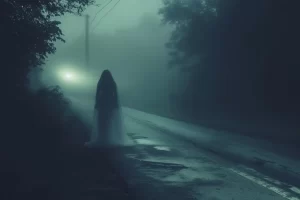Bostian Train Disaster of 1891

On a summer evening north of Charlotte, North Carolina, a train transporting more than 70 passengers departed the small town of Statesville. For just several minutes, all seemed to be running normally. Anyone at the Statesville station could watch as the passenger train roared away, heading toward its destination with no idea of what would come.
In an instant, the passenger train was gone from view, derailed from the tracks running along Bostian Bridge. The incident left more than 20 passengers dead, and several of Statesville’s townsfolk burdened with imagery of the crashed passenger car as they rushed to try and save anyone trapped along the banks of Third Creek 60 feet below the bridge.
It’s the kind of story from which ghostly legends are spun, usually accompanied by vague references to facts no one can verify. Unlike those campfire tales, though, the Bostian Bridge disaster of 1891 is anything but local lore, the events of that otherwise calm August night a stain on the West North Carolina Railroad’s history.
Where are the ghosts of the Bostian Train Disaster?
Unlike traditional hauntings, the apparitions tied to the 1891 derailing of passenger train No. 9 (sometimes referred to as No. 166) don’t have an object of personal significance or building to tie them to the realm of the living. Instead, they remain trapped aboard the locomotive, which follows the same path year after year as a residual energy doomed to repeat the tragic events that befell it on Bostian Bridge.
Booking an Asheville ghost tour is your ticket to hearing more of the city’s tragic tales and residual hauntings like that of the passengers aboard engine No. 9.
The Price of Development
By the year of the tragedy on Bostian Bridge, Statesville and Asheville had only been connected by the railway for just over a decade. As part of the Western North Carolina Railroad, the route west was initially chartered in 1855 but took 25 years to actually complete. Bringing the rail to the edge of the Tennesee border meant enlisting the work of some 500 laborers, many of whom were convicts. It was an arduous task to grade the land and blast through Mother Nature’s towering landscapes, and the price for cutting through Swannanoa Mountain for the Swannanoa Tunnel was paid for in the lives of workers.
To develop the tunnel, workers had to blast holes throughout Swannanoa Mountain, a dangerous task for even the best-trained professionals. On March 11, 1879, the president of the Western North Carolina Railroad, James Wilson, proclaimed to North Carolina’s Governor Zebulon Vance that light had “entered Buncombe county” through the new tunnel. Unfortunately, on that same day, a cave-in occurred at the tunnel, killing 21 workers and a guard, marring the otherwise good news.
The development of the Swannanoa Tunnel is said to have claimed the lives of 125 convicts, all in the name of progress. Further east, though, disaster and tragedy would further become commonplace for the West North Carolina Railway.
The Bostian Bridge Tragedy
As daybreak cast its glow over Swannanoa Valley, smoke plumed high just minutes from the heart of Statesville. Emergency vehicles, photographers, and townspeople rushed to the scene of a horrible accident as the westbound passenger train that jumped the tracks at Bostian Bridge slowly became engulfed by the rising waters of Third Creek.
No one really knows why engine No. 9 ran off its course and plummeted 60 feet into the creek below. A coroner’s inquest performed after the incident claims that someone had removed spikes, a narrative that suggested robbers targeted the train. Others firmly believe the tracks were left to fall into disrepair. However, the Richmond & Danville (R&D) system, which leased the road in 1886 and was ultimately responsible for its upkeep, much preferred the former theory. R&D’s own inquiry into the wreck sought to prove wreckers were responsible so it wouldn’t be responsible for the damage claims filed by all aggrieved parties.
The railroad company brought in its own witnesses, who corroborated that wreckers were responsible. From spikes on the track to warped rails, these individuals lent credence to R&D’s claims, some even testifying that a white man in a black suit had been suspiciously seen in Statesville. Even surviving passengers offered testimonies that supported R&D, particularly one Mrs. Moore, who stated that a $200 check and a note for $2,000 were among the items she lost in the wreckage. Miss Luellen Pool had her experience where a man with a hat covering his face reached into a nearby window and felt around as if looking for items to steal.
Though evidence seemed to pile on that the Bostian Bridge accident was the work of robbers, not everyone was convinced. The poor souls who drowned in the passenger car as the creek’s water level rose seemed to take a backseat to the cause of the tragedy. Writers for the Statesville Landmark regarded accusations that a local had wrecked the train as libelous. R&D’s own head lawyer, David Schenck, seemed doubtful of the claims of an attempted robbery, writing in his diary that petitions stating as such “contained falsehoods.”
At the end of the day, it didn’t so much matter who caused the wreck. It still happened. More than 20 people still died. And unbeknownst to everyone involved, it would be at the forefront of another tragedy almost 120 years later.
The Deadly Hunt for Ghosts
Ghost hunters and paranormal investigators are often close to death. They can touch that fine barrier that separates the living from the dead, sometimes even connecting with it. Charles Kaiser, an amateur ghost hunter, discovered in an unfortunate way just how close the hobby can bring investigators.
On the 119th anniversary of the Bostian Bridge disaster, Kaiser and a group of amateur hunters perched themselves atop the 300-foot bridge, hoping to hear the sounds of the ghostly locomotive as it made its annual pass. According to legend, on the anniversary of the disaster, the residuals of the incident can be heard. Passengers screaming and screeching wheels break the silence of the late-night air.
When the 29-year-old ghost hunter heard the sounds of an oncoming train, though, it wasn’t what he or any of the others expected. Attached to the sounds of the train was a corporeal car making its regular run. Before he could react and escape to safety, Kaiser pushed a fellow hunter to safety and was immediately hit by the locomotive.
The young ghost hunter died trying to reach out to the other side, in the process possibly becoming part of it himself.
The Residual Haunting of Bostian Bridge
There’s no telling for how long the passengers of engine No. 9 will be trapped in their spectral loop, replaying the events leading up to their deaths every year, maybe until someone steps forward with concrete proof of what caused the wreck. For now, the locomotive continues to follow its final path, crashing into the creek below each time.
In 1941, a woman reportedly (and unknowingly) witnessed No. 9 and its passengers careen off Bostian Bridge. When she ran to the embankment, the wreckage was right before her, flooded by the creek’s waters. Mysteriously, when she ran to bring her husband to the wreck, the scene was gone, and all that remained was the peaceful creek. After speaking to an agent at the Statesville train station, she realized she had just spotted a ghost train.
Haunted Asheville
Asheville and its surrounding areas are ripe for ghost stories, their histories dating back to a time before railways. An Asheville ghost tour is like a trip through time to haunting events that frame tragedies like the Bostian Bridge wreck. Book your tour today or follow our blog and socials on Facebook, Instagram, and TikTok for even more Asheville haunts.
Sources:
https://www.ashevillehistory.org/through-rock-and-time-the-railroad-comes-to-the-mountains/
https://ncpedia.org/bostian-bridge-train-wreck
https://www.cnn.com/2010/US/08/27/north.carolina.ghost.train/index.html
https://www.charlotteobserver.com/news/state/north-carolina/article234487957.html

